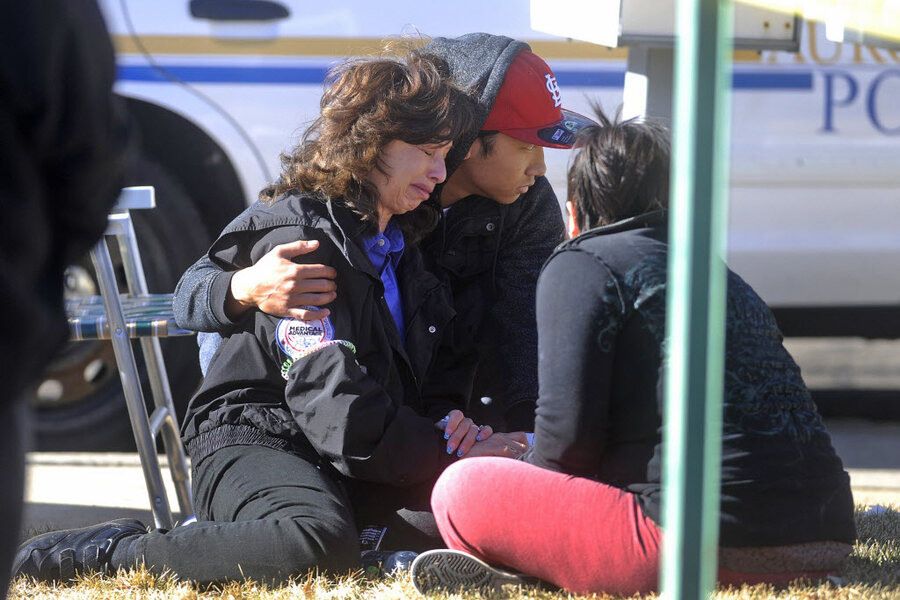Hostage situation leads to another horrific scene in Aurora, Colo.
Loading...
| Aurora, Colo.
SWAT officers who stormed a Colorado home where a gunman had holed up found a horrific scene — four dead bodies including that of the gunman.
Police said the armed man fired shots at officers Saturday from a second-story window before officers killed him. Once inside, they found the bodies of three other adults.
The suspect, whose name was withheld by police, held officers at bay for nearly six hours after neighbors reported gunfire at 3 a.m. inside the modest townhome in the Denver suburb of Aurora, said police Sgt. Cassidee Carlson.
It wasn't known if officers shot the suspect or if he shot himself.
Investigators said two men and a woman appeared to have been killed before officers arrived.
The suspect shot at police who approached the front of the home with an armored vehicle and who fired tear gas around 8:15 a.m. He was killed when he fired at officers from the second-story window about 45 minutes later, Carlson said.
"After we arrived on scene, there were no more shots fired up until he fired at us," Carlson said. "During this time he was all over the house. He moved furniture. He was throwing things. He was agitated. He was irrational."
A large front window was missing in the two-story townhome, the window's mini-blinds in disarray. Bullet holes marked two upstairs windows, and neighbors milled about outside.
A fifth person escaped unharmed and called police to report that she saw three people inside the home who "appeared lifeless," said Carlson, who declined to elaborate about the woman's escape.
A motive for the killings was unknown, and police had yet to say what weapon or weapons were used. Investigators wearing gloves and carrying evidence bags were going over the crime scene.
Police declined to release the victims' names.
"We have an idea of who they are, but we obviously want to confirm their identities with the coroner," said Carlson, who declined to release the relationship between the victims and the shooter.
Officers evacuated neighbors' homes during the standoff and used a bullhorn to communicate with the gunman, urging him to surrender.
Next-door neighbor Melissa Wright, a nurse who treated victims of the July movie theater shootings in Aurora, said she was in her second-floor bedroom when she saw the gunman start shooting from his own bedroom window. She said she didn't know what he was shooting at, and that she quickly dropped to the floor.
"I hit the ground pretty fast," Wright said.
Wright said she slid on her belly to the first floor of her home and told police what she saw upstairs. Officers quickly entered her home.
Wright said she knew the gunman as Sonny Archuleta — a name used by police officers trying to negotiate with the man with the bullhorn. Wright said the townhome may have been inhabited by the gunman, the gunman's wife, her father and another man.
The shootings occurred about four miles southeast of the Aurora Mall, where 12 people were killed and dozens were wounded by a gunman at a midnight showing of "The Dark Knight Rises" on July 20. The man charged in that shooting, James Holmes, goes to court Monday for a preliminary hearing in which prosecutors will present their case against him.
The July shootings prompted Gov. John Hickenlooper — just before the Newtown, Conn., massacre — to say it is time to debate gun control. It's expected to be a heated topic at the Colorado Legislature this year.
Aurora, just east of Denver, is one of Colorado's largest and most diverse cities with more than 335,000 residents. It is home to Buckley Air Force Base as well as the sprawling University of Colorado Health Sciences Center campus, where James Holmes studied neuroscience before the movie theater shootings.
Associated Press writer Thomas Peipert contributed to this story.







